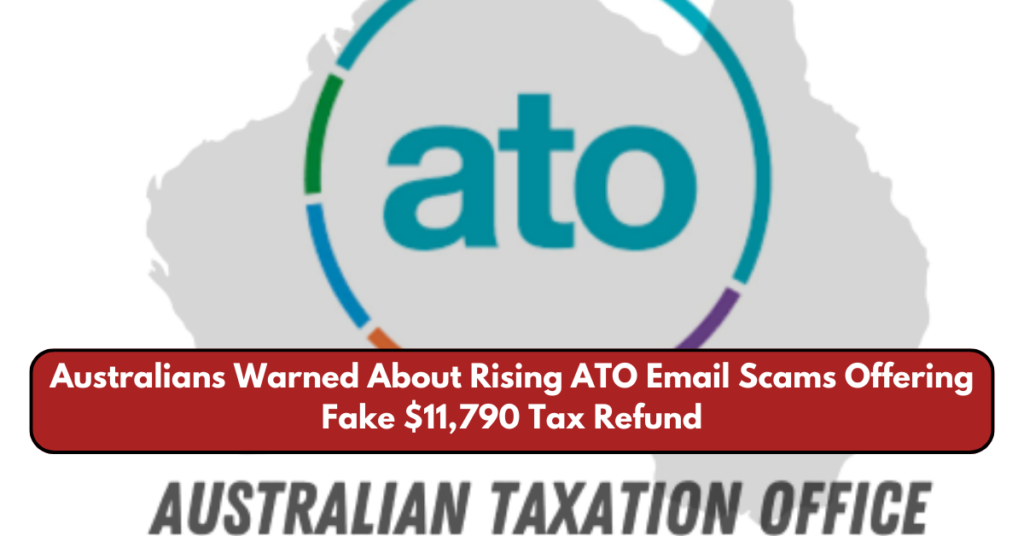Scammers are getting smarter, and Australians are now facing a new tax scam that promises a large refund of $11,790 from the Australian Taxation Office (ATO). While the email might look official, clicking on the link inside can lead to identity theft, financial fraud, and malware infections.
Unfortunately, older Australians are among the most vulnerable targets, as they may not be aware of how modern scams operate. It is essential to stay informed about these scams, recognize warning signs, and take the right steps to avoid becoming a victim.
In this article, we will break down how this ATO scam works, who is being targeted, and what you can do to protect yourself.
How the ATO Tax Scam Works
The latest scam involves emails that claim the recipient is eligible for a tax refund of $11,790. The email looks convincing, often using official ATO branding, logos, and language to make it appear real.
The message urges the recipient to click on a so-called “secure link” to confirm payment details and receive their refund. However, this is a trap.
Once you click on the link, several things could happen:
- You may be asked to enter personal and financial details, which scammers can use for identity theft.
- The link may install malware on your device, allowing hackers to steal sensitive data.
- Scammers may use your information to commit fraud, take out loans, or access government services in your name.
Who Is Being Targeted?
Scammers often target individuals who may be less aware of these tactics. According to recent reports:
- A high number of victims are older Australians, particularly those aged 65 and above.
- People who rely on government services, such as pensioners and retirees, are also at higher risk.
- Many victims unknowingly share their private details, which can lead to serious financial consequences.
Scammers deliberately use the trust people have in the ATO to trick them into sharing sensitive data.
Other ATO Scams to Watch Out For
Apart from the tax refund scam, there are several other tax-related frauds in circulation:
- Fake Tax Return Adjustments – Emails claiming that the ATO has recalculated your taxable income and you are entitled to compensation. The scammers ask for personal details such as:
- Tax file number (TFN)
- Driver’s licence
- Payslips
- Medicare details
- Fake Debt Collection Calls – Scammers posing as ATO officials call victims, threatening legal action if an immediate payment is not made.
- Social Media Tax Schemes – Fake financial advisors on social media platforms promote schemes that claim to reduce tax liability or completely avoid paying taxes.
These scams all have one goal—stealing your identity and money.
How to Identify a Scam Email
ATO scam emails often have some common warning signs. Be suspicious if you receive an email that:
- Claims you are owed a large tax refund without any prior request.
- Asks you to click on a link to receive money.
- Uses urgent or threatening language to push you into immediate action.
- Comes from a suspicious or unofficial email address.
- Contains poor grammar or spelling mistakes.
The ATO has confirmed that while they may contact taxpayers via email or SMS, they never send messages with links to log in or update personal information.
What to Do If You Receive a Scam Email
If you get an email that seems suspicious, follow these steps:
- Do Not Click Any Links – Avoid opening links or downloading attachments from unknown senders.
- Verify with the ATO – Call the ATO’s official scam helpline at 1800 008 540 to check if the message is genuine.
- Report the Scam – Forward the scam email to ReportScams@ato.gov.au so authorities can investigate.
- Delete the Email – Once reported, remove the email from your inbox to avoid accidental clicks.
- Warn Others – Share this information with family and friends, especially older Australians who may be more vulnerable.
The Dangers of Tax Fraud Schemes on Social Media
Apart from email scams, fraudulent tax schemes are circulating on social media. These scams promise to:
- Help you avoid paying taxes altogether.
- Offer unrealistically high tax refunds.
- Reduce your tax burden through “special strategies” that are actually illegal.
ATO officials have warned that people caught in such schemes could face severe consequences, including:
- Paying back unpaid taxes with added penalties.
- Facing legal action for tax fraud.
- Losing large amounts of money to scam promoters.
If an offer seems too good to be true, it probably is.
Final Tips to Stay Safe from Tax Scams
- Always verify any communication claiming to be from the ATO through official channels.
- Never share personal details via email or SMS.
- Educate yourself on the latest scams and how they operate.
- Report suspicious activity to protect yourself and others.
With tax scams becoming more advanced, Australians must stay cautious. If something feels suspicious, trust your instincts—it’s better to be safe than sorry.
This article has been carefully fact-checked by our editorial team to ensure accuracy and eliminate any misleading information. We are committed to maintaining the highest standards of integrity in our content.
Filza specializes in simplifying financial topics for everyday readers. Whether breaking down Canada’s tax guides or U.S. benefits like SNAP and VA Disability, Filza’s relatable writing style ensures readers feel confident and informed. Follow her insights on LinkedIn or reach out via email at shewrites.health@gmail.com.

